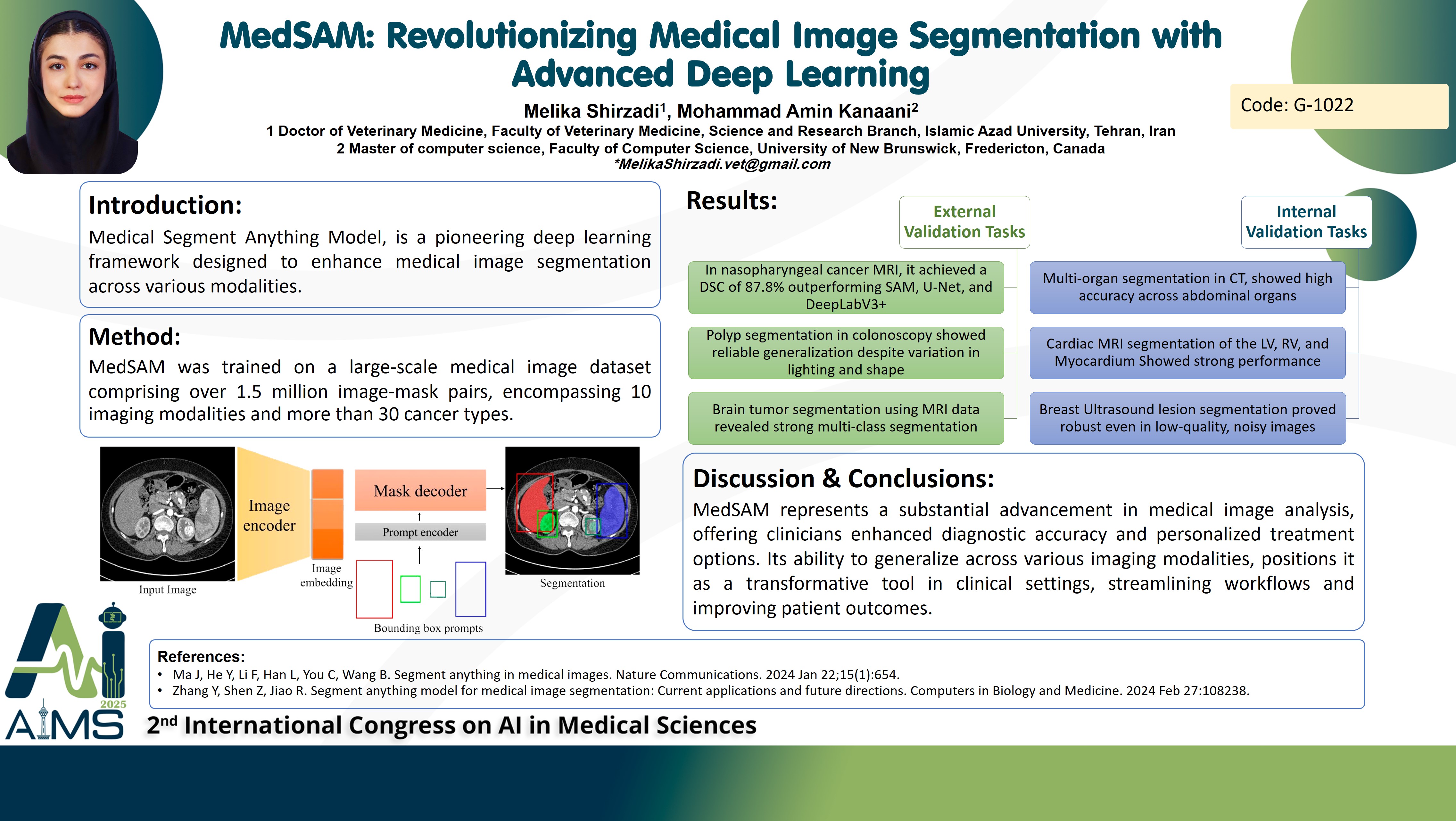MedSAM: Revolutionizing Medical Image Segmentation with Advanced Deep Learning
Code: G-1022
Authors: Melika Shirzadi * ℗, Mohammad Amin Kanaani
Schedule: Not Scheduled!
Tag: Biomedical Signal Processing
Download: Download Poster
Abstract:
Abstract
Background and aims: MedSAM, or Medical Segment Anything Model, is a pioneering deep learning framework designed to enhance medical image segmentation across various modalities. Traditional segmentation methods often cater to specific imaging types and lack generalizability. MedSAM aims to bridge this gap by providing a universal model capable of segmenting diverse anatomical structures and lesions, thus facilitating accurate diagnosis and treatment planning. It is anticipated that by leveraging extensive training on a comprehensive dataset, MedSAM will outperform existing models in accuracy and versatility. Method: The development of MedSAM involved training on a large-scale dataset consisting of 1,570,263 image-mask pairs, which cover over 30 cancer types and 10 imaging modalities. This extensive dataset allows the model to learn a rich representation of diverse medical images, capturing a wide array of anatomical structures and pathological conditions. Comprehensive evaluations were conducted across 86 internal and 60 external validation tasks, utilizing metrics like the Dice Similarity Coefficient (DSC) to assess performance. Results: MedSAM demonstrated remarkable performance across multiple segmentation tasks, achieving median DSC scores of 87.8% in nasopharynx cancer segmentation. This score significantly surpasses traditional models like U-Net and DeepLabV3+, which typically report scores around 75-80% for similar tasks. MedSAM also excelled in segmenting other challenging targets such as liver tumors and cervical cancers. For liver segmentation, it achieved a DSC of 90.5%, showcasing its ability to delineate structures with indistinguishable boundaries effectively. The model's adaptability was further illustrated through its application in various imaging modalities, including MRI, CT scans, and PET scans. In quantitative analyses, MedSAM exhibited a Pearson correlation of 0.99 in tumor burden quantification compared to expert evaluations, indicating a high level of agreement with clinical assessments. Moreover, the model also demonstrated efficiency in processing time, making it suitable for real-time applications in clinical workflows. Conclusion: MedSAM represents a substantial advancement in medical image analysis, offering clinicians enhanced diagnostic accuracy and personalized treatment options. Its ability to generalize across various imaging modalities, positions it as a transformative tool in clinical settings, streamlining workflows and improving patient outcomes.
Keywords
MedSAM, Medical Image Segmentation, Cancer
